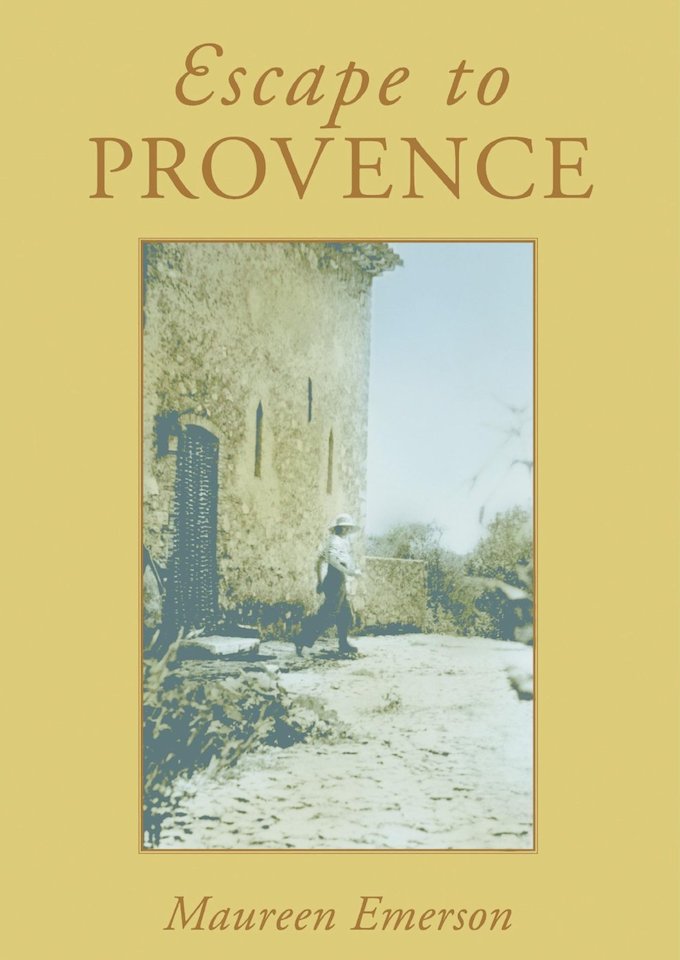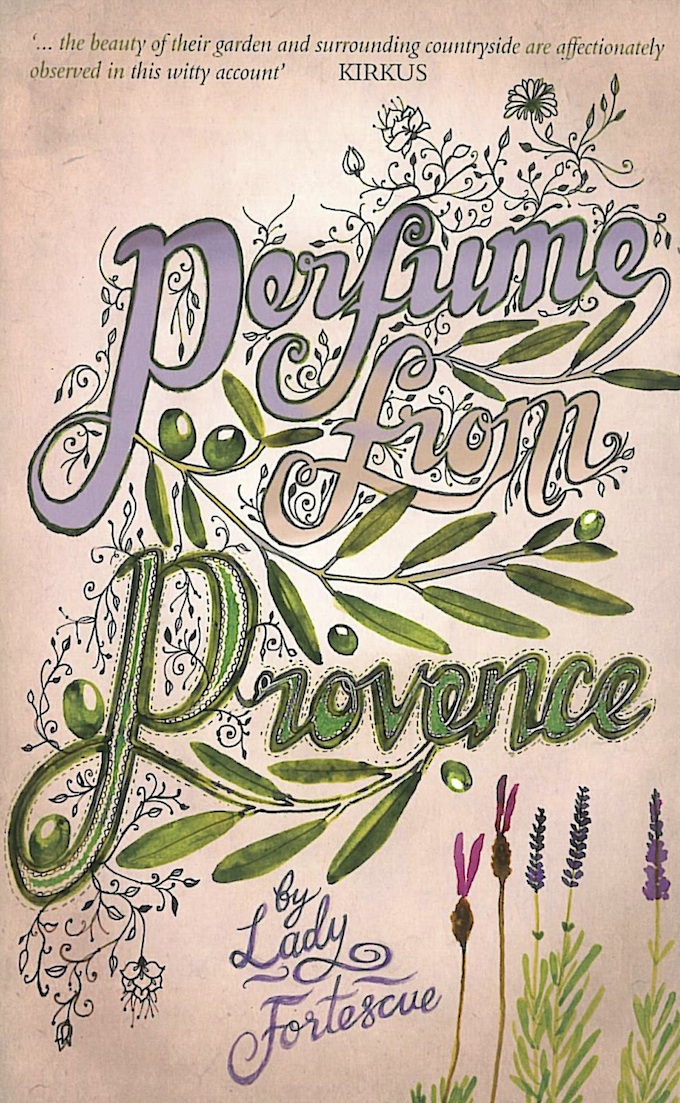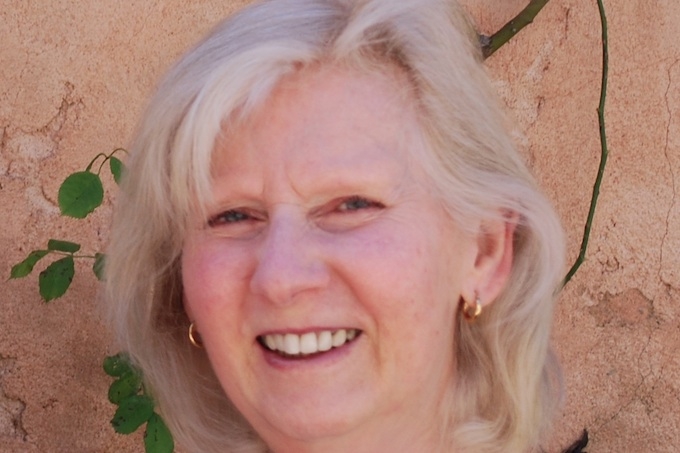Maureen Emerson is a British writer and biographer with an Irish-Austrian background who lived in the South of France for 22 years.
Whilst living in Provence, Maureen Emerson became interested in the lives and stories of the Anglo-American expatriates who lived on the Riviera during the 1920s and ’30s, and how the Second World War changed both their lives and the region forever. She wrote her first book ‘Escape to Provence’ the true story of Lady Winifred Fortescue and Elisabeth Starr in 2008, and it was then reprinted in 2009.
‘Escape to Provence’ was very popular and was stocked in many English-language bookshops on the Riviera and following the second edition reprint, Maureen was also invited to speak at the Literary Lunch organised by English Book Centre in Valbonne. ‘Escape to Provence’ is available for purchase directly from her website, and both the paperback and Kindle versions are also available from Amazon.
She is currently working on her second book ‘Living and Loving on the Riviera’, the true story of the American architect Barry Dierks, and his English partner Colonel Eric Sawyer, and this new work will trace the history behind some of the houses and gardens they designed together on the French Riviera during the 1920s and 1930s.
The new book is now in progress and will also be available from her website, but Riviera Buzz readers can get a sneak peek and read extracts from the new book here.
Maureen and her husband have now settled in the UK after living in Provence for years, but she regularly returns to the Riviera and gives talks both in England and France about ‘Escape to Provence‘ and the lives of Lady Fortescue and Elisabeth Starr.
Riviera Buzz recently caught up with her for a chat about her new book, her love of the Riviera and her career as a biographer.

Maureen, have you always wanted to be a writer?
I certainly didn’t have that urge as I grew up, although my mother always wrote short stories and poems. However, the only subject I was interested in at school was essay writing. I even found parsing sentences totally confusing!
What is a typical working day like for you? When and where do you write?
I would love to be able to write all day and every day and wish I had a typical working schedule. For ‘Escape to Provence‘ I researched during the day, either at home or ‘in the field’ and wrote at night until 3 am when it was blissfully quiet. But one can’t continue to do this. Now I grab time when I can, because as we all know ‘stuff happens’. Sometimes one has to just march into a room and firmly close the door.
What is the hardest part of writing for you? And the most rewarding?
I don’t find it hard to write (the exception being making time). My subjects are real people and their lives are quite fascinating. I love research, whether it’s in archives on the Riviera, in London, in an Oxbridge College etc. The British Library, with its wonderful French section full of obscure books, is a treasure trove.
What advice would you give to aspiring writers?
It’s impossible for me to give advice to aspiring novelists, being a factual biographer I don’t have that kind of imagination. To would-be biographers I would dare to say: Research anywhere and everywhere, especially if you are able to travel to do so. Trace relevant families and build a good relationship with them. This is almost always fruitful and the greatest of pleasures. Try and use letters from the past, found either in family archives or in books. Stick to the facts, they are usually more fascinating than fiction. Don’t invent conversations – we weren’t there, so no suppositions. If you aren’t sure of a fact, say so.
You lived in the South of France for many years and still spend a lot of time there today, what first attracted you to this region of France?
We travelled to many places over 20 years, following my husband’s job. In Singapore, waiting for our next posting, we heard that it would be the South of France which was then unknown to us, and felt we were the luckiest expat family in the world. The contract was for two years – we stayed for twenty-two.
{youtube}HDKI_qdk7PQ?rel=0{/youtube}
Your first book ‘Escape to Provence’ is the true story of Lady Winifred Fortescue and Elisabeth Starr, and their lives in Provence of the early 1900s – how did you initially discover and become interested in the story of these two remarkable ladies?
In the 1980s a group of us used to work in the second-hand bookshop of the old Sunny Bank hospital in Cannes. Sunny Bank, founded in 1897, lived a splendid caring life for most of a century, never closing during two world wars. (Razed to the ground in 1997, shortly after celebrating its 100th birthday, it is now the inevitable block of apartments However, along with a French partner Emera, it has risen from the ashes as a well-run, modern care home in Mouans-Sartoux. The Sunny Bank Association has a base there and is still very active in the community).
But back in the 1980s, the social life of the Riviera was already beginning to change. Older residents who had made the coast their home, often in lovely villas, were leaving or dying. Many of their possessions were donated to Sunny Bank by their families for the charity sales. Precious books flooded in. Some were sets of very old editions; others beautifully presented poetry books; Greek texts bound in hide etc., marvellous out-of-print novels. I even found a very old report from Eton in one of these donations. But the most sought-after, even fought-over, books were those by Winifred Fortescue which were then quite out of print and becoming rarer. This was an author I had never heard of and I found the two books I managed to pounce on enchanting, and then thought no more about them.
Around this time I drove up to the pretty village of Opio and, for some reason, became fascinated by a steep dark hill which ran up from the main road. I was so intrigued by it that I turned back, accosted a local man and actually asked what the hill was. Rather bemused he replied: ‘Ça c’est la Colline des Anglais’ (The English Hill)
I didn’t walk up the hill that day and rarely returned to Opio. About 20 years later the idea of writing a biography of Winifred came to me and I found out from a gardener who came to help us that she had lived on that very hill, (she herself very rarely gave place names in her books). In fact not only did she live there, but the three main subjects of several of her books lived there too. After that there was no going back. Research flew along and I became involved with researching all her homes, including her woodsman’s cottage in war-torn Sussex.
Can you give us a quick synopsis of ‘Escape to Provence’?
‘Escape to Provence‘ is the true story of two remarkable women who, with style and energy, carved out new lives for themselves in the South of France during the first part of the last century. An American, Elisabeth Parrish Starr, a heroine of the Great War, and an Englishwoman, Winifred (Peggy) Fortescue the author of ‘Perfume from Provence‘, a best seller of the 1930s and ’40s, both escaped to Provence for quite different reasons. Elisabeth, as the result of a personal tragedy coupled with a need to live her life without censure, and Peggy because she and her husband felt that in Provence ‘one could be poor with dignity’. Once widowed, Peggy moved next to Elisabeth on her Provençal hillside and the two women lived a bucolic existence, until the threat of another conflict changed their lives forever.

Did Lady Fortescue’s writing influence your own writing style at all?
People tell me I have a particular ‘voice’ and this is nothing like Winifred’s. A good thing, as when I include enthusiastic extracts from her books I feel they light up the page. (Winifred Fortescue wrote seven books about her life in Provence – more information about her writing is available here).
The French Riviera has attracted English and American painters, writers and creative artists for many years, what is it about this region in particular which inspires so many people to try and capture it on the page or on canvas?
Beauty, to which artists and writers are always drawn and of which there was an abundance in their time. A time before béton armé invaded the towns of the Riviera. The artists painted in the hills and on the coast. Writers tended to concentrate on those many and varied personalities who formed the expatriate society of the day. Stories of glamour and scandal abound. Winifred Fortescue was among those who paid tribute to a very different life among the flowers and frequent poverty of the hills. With Winifred I wrote about the latter, in my present project I’m deeply involved with the former.
Your new book ‘Living and Loving on the Riviera’ is another true story, that of American architect Barry Dierks and his English partner Colonel Eric Sawyer – can you tell us a little about the book and the life they lead on the Riviera?
Living and Loving on the Riviera is the story of the American architect Barry Dierks, his English partner Eric Sawyer, and the many stunning houses and gardens they designed on the French Riviera during the 1920s and 1930s, for those who could afford them. From their own home built into the red rocks of the Estérel Mountains and above the Mediterranean, Barry as architect, in partnership with Eric as garden designer and business manager, built or remodeled almost 100 houses in the region. These were occupied by Americans, British and French and ‘Living and Loving‘ tells the stories of the lives and adventures of some of these fascinating people. Handsome and sociable, Barry and Eric were ‘the two charmers’ of the Riviera social scene in the years of après-guerre and avant-guerre, leading an enchanted life until the Second World War. They stayed on the Riviera and revealed their determination and courage in their respective adventures.
And what initially drew you to their story?
The history of the French Riviera is totally unique. I began to feel the details, anecdotes and personalities of past eras were, indeed, slipping into the past. Why should the French residents of the Riviera be overly interested in the dramas of the hedonistic aristocrats, industrialists and socialites who congregated around the Cannes Yacht Club and Palm Beach, punctuated with dashes along the coast to the casino at Monte-Carlo? Why should present day expatriates have any real interest in the intricacies and courage of the Resistance groups operating along the Riviera in the latter years of the last war? Who now knows that the chief concierge of the Carlton in Cannes allowed a clandestine radio, receiving “Ici Londres”, to operate from one of the hotel bedrooms? That submarines and feluccas, at great risk, put British agents onto the rocks at Antibes and on the Estérel? That a schoolteacher, Ange-Marie Miniconi, saved the Croisette from being blown sky-high by mines planted throughout the drains? But this and much more is welded into the history of this unusual part of the world and I’m passionately interested in it all.
Typically how long does it take you to research a book like this? Where do you find your background information?
One always begins by trying to contact the families. In this I’ve been immensely lucky again in having the most generous of help, being sent invaluable writings, photographs etc., relating to Barry and Eric. One takes a name or reference and runs with it. American university archives are efficient and, again, invariably generous. Military and college records, certificates, mentions in books – one expands and expands until research becomes a sort of spider’s web of information. ‘Escape to Provence‘ was basically one long story with continuing threads. ‘Living and Loving‘, dealing as it does with separate houses and quite different people, needs each chapter to be treated as a different research project.
Can you tell us where and when will the new book be available?
I’m still working on it, so I will have to let you know!
{youtube}R1n–viKx5w?rel=0{/youtube}
And finally, now that you are settled back in the UK and make regular trips back to the Riviera, what do you miss most about life in Provence
Our good friends. The colours of the Mediterranean and the hills, the hills. And I never miss visiting, (and climbing up this time!) that hill in Opio on what is now the Chemin du Château, and looking at the four houses of Winifred and her three friends ranged along the curve overlooking the wonderful view of the Plan de Grasse spread out before them.
A huge thank you to Maureen for taking the time to answer our questions and for telling us a little bit about her research and work regarding this fascinating period in the history of the French Riviera.
Lead image courtesy Maureen Emerson



Wonderful interview – as a fan of Escape to Provence I can assure all that the forthcoming book will be just as fascinating!